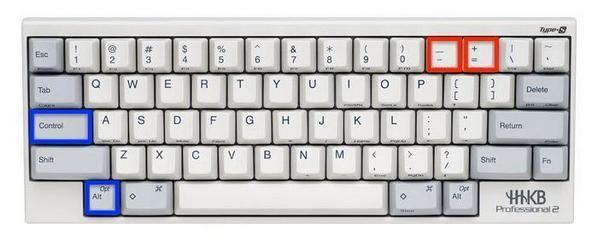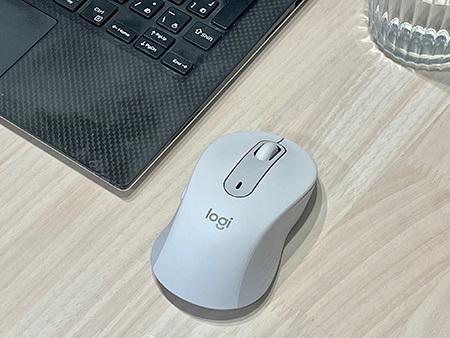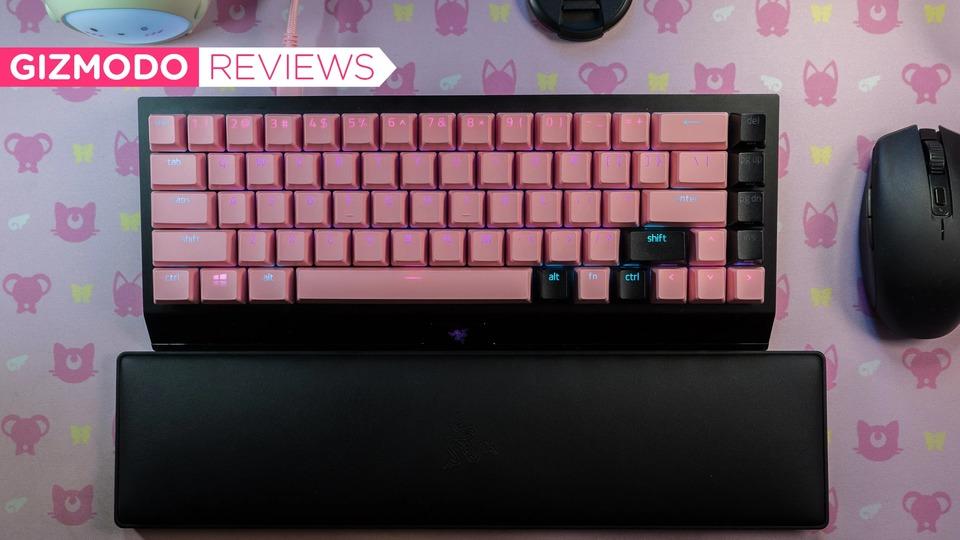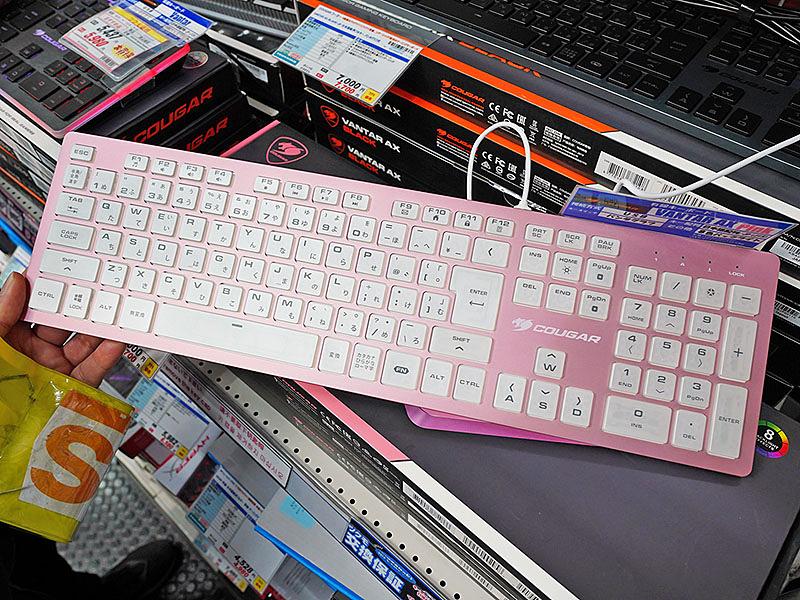Zoom in and zoom out is one of the handy shortcut keys. The display resolution of recent notebook PCs has increased, and it is now possible to display quite fine details. After all, it is often convenient to display more information at once, so displays are often used at their highest resolution.
When this happens, the displayed characters become small, so it is sometimes difficult to distinguish what is written. You will often see businessmen squinting their eyes closer to the display. If you don't, you won't be able to see very well.
Using shortcut keys for zooming in and zooming out, you can adjust the size so that you can see it without looking at the display. As presbyopia progresses, it becomes difficult to see the characters on the display, and being able to quickly change the size of the characters is very convenient.
In the case of Excel, the shortcut keys for zooming in and zooming out are as follows.
By the way, on Japanese keyboards, "-" and "=" are assigned to the same key, so the actual keys to press are as follows.
| Key | Operation |
|---|
| "Ctrl" + "Alt" + "Shift" + "-" | Zoom in |
| Ctrl+Alt+- | Zoom out |
< /table>Enlargement and reduction are opposite functions, so if you make it too big, make it smaller. In other words, it is easier to handle these two shortcut keys if they can be pressed alternately. Furthermore, since it is expansion and contraction, it is more intuitive to assign "+" and "-" instead of "=" and "-".
However, in both Microsoft Excel and other applications, zooming in and zooming out are often assigned to '=' and '-'. Despite the inconvenience.
There is a reason for this. Let's take a look at this shortcut key on an English keyboard.
On English keyboards, "-" and "=" are adjacent keys. In other words, you can zoom in and out by holding down the "Ctrl" and "Alt" keys and pressing the "-" and "=" next to each other. On an English keyboard, this shortcut key is very easy to handle.
"-" and "=" become "_" and "+" when you press the shift key. Although it is an underscore, the print looks like a minus. In other words, it looks like "-" and "+" are lined up on the key top. Therefore, on an English keyboard, "Ctrl" + "Alt" + "=" and "Ctrl" + "Alt" + "-" are easy to press, easy to understand and easy to remember in terms of key printing. This shortcut key assumes an English keyboard.
In this way, many applications developed under the leadership of the United States have shortcut key settings that assume that an English keyboard is being used. This is why there are some keyboard shortcuts that are difficult to use when using a Japanese keyboard.
It is a different story if it is a desktop PC that allows you to select a keyboard, but when it comes to laptops, the keyboard used is often a Japanese keyboard. There are models that can select an English keyboard, but the models that can be selected are limited. In some cases, models that previously had an English keyboard available now only have a Japanese keyboard model.
The Japanese keyboard has the advantages of the Japanese keyboard, but it cannot be said that the Japanese keyboard is efficient in terms of shortcut keys for applications. In particular, the arrangement of symbols has low regularity and symmetry, making it difficult to remember and use.
If this is an English keyboard, the symbols are arranged relatively regularly and symmetrically, making it easy to remember and use the shortcut keys. From the point of view of using shortcut keys to improve work efficiency, it is often advantageous to choose an English keyboard as the keyboard.
When purchasing a laptop, there are only a limited number of models that can choose an English keyboard, and unlike Japanese keyboard models, it takes time to obtain after ordering. However, I should point out that the English keyboard is often useful when it comes to shortcut keys for US-made applications and is a worthy purchase option. If you really want to improve your work efficiency, you should definitely add an English keyboard to your consideration.
Reference








